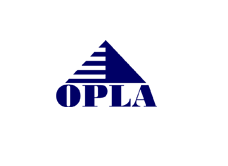How to use ChatGPT to draft a provisional patent (safest-possible DIY version)
0) Before you type a word: protect yourself.
- Don’t paste true trade secrets into cloud models. Anonymize specifics, keep key dimensions/formulas offline, or use a local model.
- A provisional is private and not examined, but you still must teach how to make and use it; “ideas” aren’t enough.
1) Gather the facts you’ll feed the model.
Make a “facts pack” you can paste in chunks: problem addressed, prior solutions, what’s new, components with labels, step-by-step operation, materials/options, manufacturing/assembly paths, performance targets, failure modes, and at least 3–5 design variations (“embodiments”). A prototype isn’t required, but your write-up must enable a skilled person to build it.
2) Use prompts that force structure and completeness.
Paste your facts, then run these in order:
Prompt A — Section skeleton
“Act as a technical scribe. Using only my facts (no outside info), draft:
Title; Field; Background (problems with prior art); Summary; Brief Description of Drawings;
Detailed Description with labeled parts and numbered steps; Embodiments/Variants; Advantages; Definitions.
Keep marketing out. Flag gaps with TODOs.”Prompt B — Figures list
“Create a figure list (FIG. 1…N) with each view and the part numbers referenced.
Ensure consistent labels across text and figures.”Prompt C — Embodiments expansion
“List at least 5 alternative embodiments that still achieve the core result.
For each, describe changes to parts, sequences, or materials.”Prompt D — Enablement check
“Run an enablement audit: what can’t a skilled person build from this?
List missing dimensions, tolerances, interfaces, control logic, ranges, and manufacturing steps to add.”3) Red-team the draft.
- Have ChatGPT run a consistency sweep for part numbers and terminology.
- Replace vague terms (“strong,” “fast”) with measurable ranges.
- Add “best mode” notes and operational limits. Then you manually fix anything the model guessed. AI can hallucinate; you own the consequences.
4) Drawings matter.
You can hand-sketch; just label parts to match the draft. Add block diagrams, flowcharts, and exploded views. The text must explicitly tie each figure to the description and part numbers.
5) Assemble the provisional package.
- Combine the polished text + figures into a single PDF.
- Claims are not required for a provisional; if you include any, keep them broad and tentative.
- File it as a provisional in USPTO Patent Center, list all inventors, and save the filing receipt.
- Calendar your 12-month deadline to file a non-provisional that fully claims what you disclosed.
6) After filing: reality check.
“Patent pending” markets seriousness but gives no right to stop copycats. Use the 12 months to test, refine, and expand embodiments before you file the utility application. Filing too early with thin disclosure — or waiting too long — are both costly mistakes.
Safe-use tips for AI in this workflow
- Treat AI as a drafting accelerator, not a co-inventor.
- Keep critical know-how offline until you’ve filed.
- Have a professional review before you rely on it.
Bottom line
If you’re going DIY, structure your prompts to force completeness, obsess over embodiments, tie every figure to labeled parts, and file early enough to win “first-to-file” without sacrificing substance. Then use your 12 months wisely.
Further reading (plain-English guides)
- Provisional vs Utility: what each really does
- How “complete” you need to be
- Prototype myths
- What “patent pending” actually means
- Timing pitfalls: too early vs too late
- Using AI in invention work — risks and guardrails
- Real patent strategy
Reach out and I’ll sanity-check it. Or keep learning in the Protect & Profit Blog.



